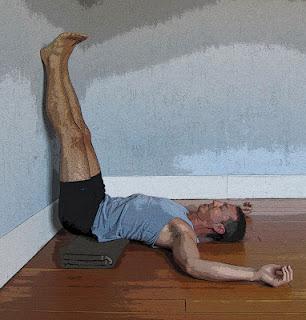A: I understand why you might be afraid of doing yoga again but I want to reassure you that starting to practice again will be beneficial for you in so many ways. I currently have a student with a lot of physical challenges and chronic pain from prior surgeries. She has told me so many times that even though her body may not be able to move the way she wants it to, when she wants it to do something, she finds that “yoga is good for my mind. It makes me tune in and just listen to myself.” This individual needs a lot of modifications when she practices, but because she trusts both me and my co-teacher Bonnie, she is willing to try new things, "even when they are scary,” specifically because she knows she can stop WHENEVER she needs or wants to and we respect her decisions. We have a “circle of trust” in our class that is very valuable to both the teachers, the students and our assistants.
The great thing about yoga in my mind is the ability to stop whenever necessary. The practice is an internal dialog not an external show. Sometimes we need to be reassured we can still do an activity but are afraid because it might hurt. Well, if something or an activity causes an increase in pain, then we have the ability to stop the action. Sometimes although our minds fear something when there really isn't a physical correlation between the fear and the action, we have to teach our mind not to fear the action. It is kind of like relearning to ride a bike when we have fallen off in the past and done some serious damage but now have the desire to get back on the bike. But where to start? With all activities it is helpful to imagine the activity first before attempting it. So, if you had some yoga poses that you used to do that gave you pleasure, start with those. I would set myself up in a position of comfort where I was warm and felt safe, and then I might mentally begin the practice using only my memory. After a while of envisioning the pose, I would try it just a little bit. If I felt scared that I was going to hurt myself, then I would stop and leave it and try again tomorrow.
If this type of mental re-entry into yoga doesn't work for you, then you might re-contact your teacher (if you had one) and ask to talk about your concerns about returning to a class. If you don’t have a teacher anymore, look for someone in your local area who has experience with working with individuals with neck injuries and discuss your concerns about re-entering a class. If that isn’t possible, look for a class either for people recovering from injuries or with a gentle focus, and, again, approach the teacher with your concerns. Going back to a class has to feel safe for you, and in order to feel safe you have to be able to trust the teacher to not make you do more than you are comfortable with. Don’t be afraid to be frank about your needs and to have the ability to keep yourself safe. If you still can't find a teacher who fits this profile, contact the International Association of Yoga Therapists and ask for a teacher in your area or near to you that you can work with. They keep a registry on file for all members.
 And finally when you do begin to practice I would follow the motto of “less is better” because more than that might spiral you back into a flare-up cycle and put you off of yoga for quite a while. Poses that I particularly like when my own neck is feeling fragile are more passive poses like Viparita Karani (Legs Up the Wall pose) or a passive backbend over bolster with neck and head support. Active practice like standing poses with arm motions often make my own neck feel worse, so go easy on those. Learning to twist again without using arms for leverage also is important. I also like Chair Shoulderstand with a bolster under my upper back and no weight on my neck.
And finally when you do begin to practice I would follow the motto of “less is better” because more than that might spiral you back into a flare-up cycle and put you off of yoga for quite a while. Poses that I particularly like when my own neck is feeling fragile are more passive poses like Viparita Karani (Legs Up the Wall pose) or a passive backbend over bolster with neck and head support. Active practice like standing poses with arm motions often make my own neck feel worse, so go easy on those. Learning to twist again without using arms for leverage also is important. I also like Chair Shoulderstand with a bolster under my upper back and no weight on my neck.You mention only the physical aspect of asana but as you can see on many of the posts on our blog, that is only one small part of the practice of yoga. I might use this opportunity to re-visit some of the other limbs of yoga, especially some pranayama or basic breathing practices. The ability to fully breathe is a gift in learning to manage chronic pain and stiffness because it's like doing a massage from the inside out. I suffer from major neck issues myself, and I find that my neck will often let me know when I am overworked or overly stressed because the littlest things can set off my own pain cycles. There is no quick fix, but there are many pieces to the puzzle in learning how to manage ourselves in life.
—Shari

